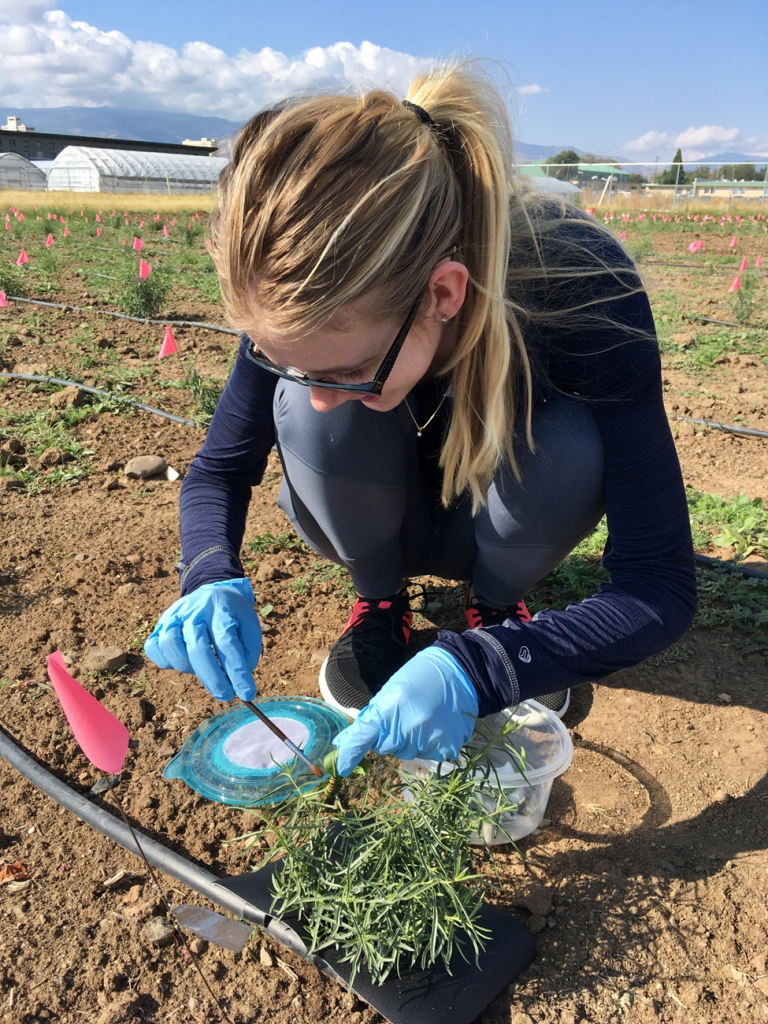|
Getting your Trinity Audio player ready...
|
Aramee Diethelm discusses her article: ‘Herbivores disrupt clinal variation in plant responses to water limitation.’
Factors Shaping Plant Traits
Plants, often perceived as static, exhibit remarkable resilience in challenging environments involving rapid adjustments (plastic responses), and evolving (evolutionary responses) to cope with challenges. Research has predominantly focused on single stressors, despite the increasing occurrence of multiple simultaneous stressors resulting from global change. Although limited research indicates differences in plant trait responses between single and combined stressors, factors such as the plant’s biochemistry, available resources, and evolutionary history influence these responses. As plants strategically allocate their resources, they face trade-offs between various stressors and biological processes. For instance, when water is limited, plants may prioritize efficient water use, which limits investments in other traits.

Imposing Stress in a Common Environment
In this study, we examined how plants respond to distinct types of stress both individually and in combination. We then explored how the environmental stress history at seed-source locations affected these responses. We hypothesized that when water limitation and herbivory occurred simultaneously, the plant responses would interact in ways that oppose the effects of each stressor in isolation. Additionally, we predicted that plants from wetter areas, which experience greater water deficit variations, would exhibit more plastic responses to water limitation, but herbivory would constrain this plasticity. We used narrowleaf milkweed, a widely distributed species found in diverse abiotic conditions, to examine physical and chemical trait responses to short-term stressors. Using a common garden, we conducted a factorial experiment crossing water limitation with herbivory.
We used seeds collected from five populations across a gradient of aridity in the Great Basin, USA. We previously demonstrated that the offspring of plants from these populations respond differently to water limitation, in patterns suggestive of local adaptation to water availability.
| x | Water Availability | |
| Plant Damage | Reduced Water + Herbivory | Well Watered + Herbivory |
| Reduced Water, No Herbivory | Well Watered, No Herbivory | |
Chemical Diversity in Plants
Plants deploy a diverse array of secondary chemicals to shield themselves against both biotic and abiotic stressors. Ongoing research is uncovering the potential for valuable synergistic effects among compounds, with an increasing chemical diversity. Narrowleaf milkweed produces high concentrations of toxic secondary chemicals, called flavonols in its leaves. Flavonols may mitigate plant tissue damage under stressful conditions due to their antioxidant properties.
Variation in Traits
Our findings unveiled a nuanced relationship between plant traits, environmental stress, and herbivore pressure. When plants faced water limitation alone, they responded by increasing their water use efficiency, including narrowing their leaves and reducing aboveground biomass. Plants also altered the levels of secondary chemicals within their leaves, with a greater evenness in the relative abundance of flavonols. Herbivory alone led to an increase in the richness of chemical compounds. In both instances, these responses resulted in an increase in foliar chemical diversity. However, plants that experienced both water limitation and herbivory exhibited similar phytochemical diversity to well-watered control plants. This lack of plasticity in chemical diversity was associated with a reduction in relative growth rates.

Response Gradients
We observed a pattern of changes in plant trait responses along the aridity gradient of seed-source locations, suggesting clinal variation. A cline is a gradual, systematic change in a trait across a species’ geographical range in response to varying environmental conditions. In our study, leaf chemistry traits, including both constitutive means and plasticities, corresponded to the water deficits at seed-source locations. Plants from drier sites exhibited distinct responses to water limitation, leading to differences in phytochemical diversity compared to plants from more favorable, wetter environments.
The Herbivore Factor
The capacity of plants to acclimate to water limitations was influenced by the historical climate conditions of the seed collection site; however the presence of herbivores interfered with these adjustments. The co-occurrence of herbivory seemed to override the clinal variation in plant responses, highlighting the complexity of plant-herbivore interactions.
Implications of Plant Responses
Our results suggest that stress histories at seed-source sites affect a plant’s ability to adapt to short-term challenges. Moreover, it suggests the existence of intricate trade-offs in how plants allocate resources to counteract different stressors. This research underscores the necessity of understanding how plant species respond to multifaceted environmental challenges, especially in a world undergoing rapid climate change. This understanding empowers us to predict how plant populations may thrive or struggle in a changing environment.

